How Marketing Agencies Make Money: Most Profitable Pricing Models for Agencies

In a world where algorithms rule and attention is fleeting, digital marketing is the right tool to tame this ever-changing world. So, today, we’ll dive deeper into how marketing agencies make money channels and take a look at how those agencies operate.
We will review the business models they adhere to, how they price their services, and how they build partnerships. After all, we hope this journey will be engaging. For this, we will aim to make it smooth and not definition-overwhelming. Brace yourself, it is easier than it appears!
Let’s get to it!
What is a digital marketing agency?
Traditionally, let’s start with the definition. So, what’s a digital marketing agency?
Speaking shortly and straightforwardly, a digital marketing agency is a company that specializes in helping businesses become popular in the digital realm, expand their reach, and interact with their users, buyers, or customers. However, there’s more to this. In fact, a lot more.
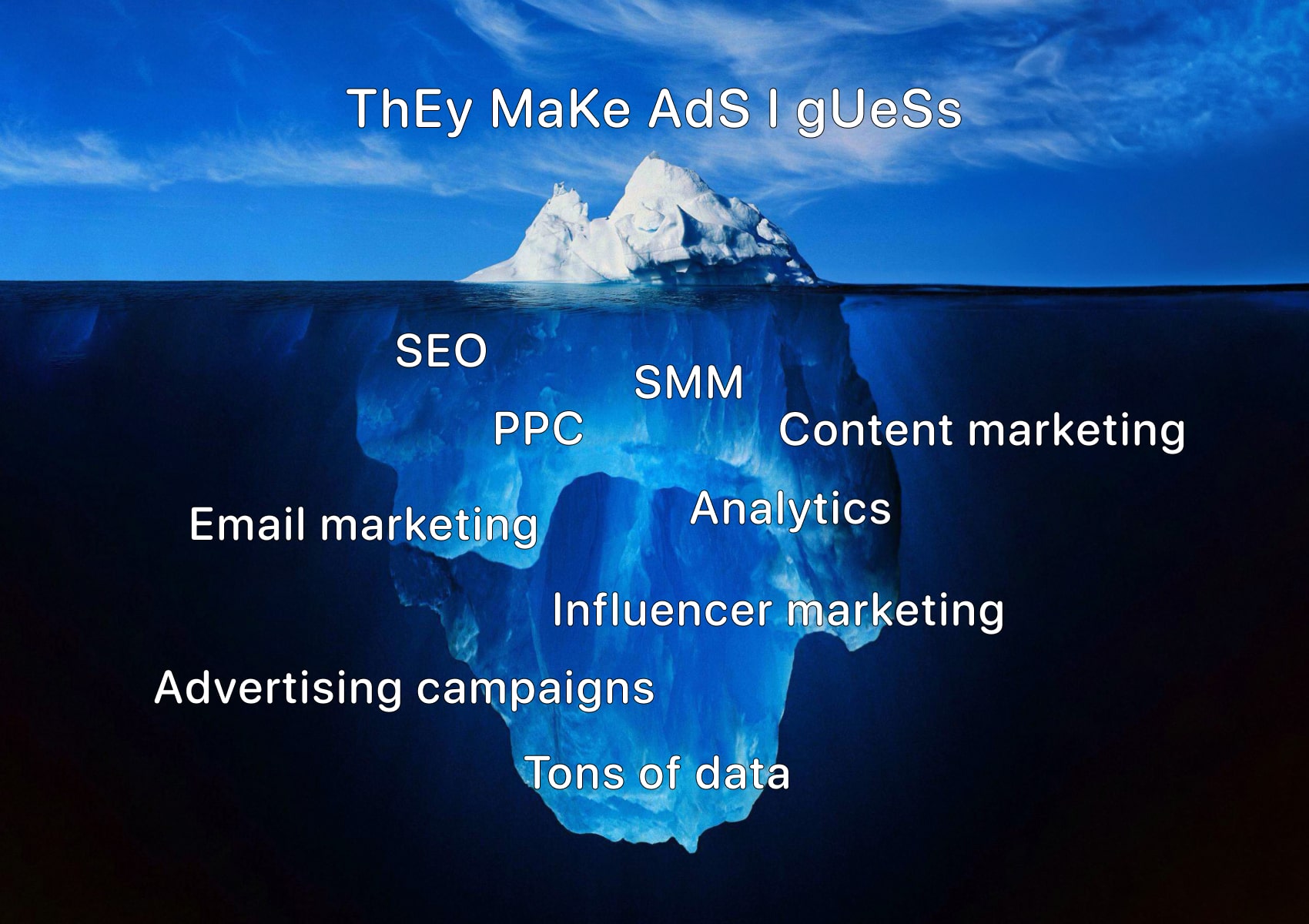
Now, to the interesting part: how marketing agencies make money. The thing is, digital marketing has grown so much that people create companies and enterprises to handle it. Digital marketing agencies enlist numerous specialists in various fields and utilize lots of different tools to make their work effective and competition-withstandable.
With today’s world’s capabilities, you can even stop wondering how to grow a digital marketing agency. Today, it offers a comprehensive range of services tailored to meet the unique needs of each client. This can include search engine optimization (SEO), pay-per-click (PPC) advertising, social media management, content marketing, email marketing, website development, analytics, and much more. Such agencies work shoulder-to-shoulder with businesses to identify their goals, execute marketing campaigns, and continuously monitor and optimize results.
Pricing Models
Now, to the second curious question: how do digital marketing agencies make money? In fact, there are several ways. In the marketing realm, though, they are called pricing models, so let’s stick to the right terminology.
In this part of the piece, we’ll look at the 4 most common types of pricing strategy in marketing. In fact, they’re the core, and agencies may use several simultaneously, combining them. Here they are.
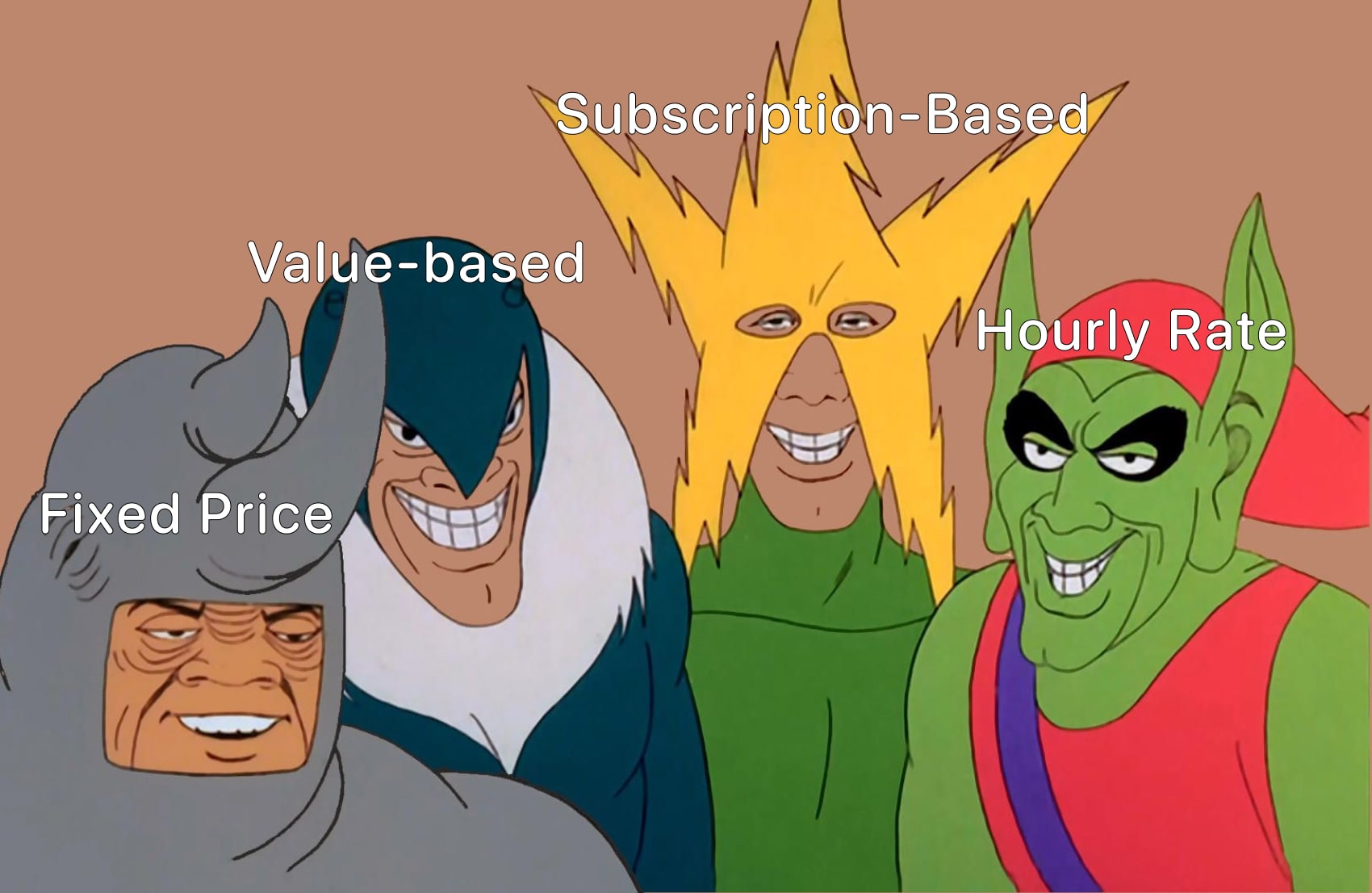
Fixed Price
This one is the simplest of all. Under the fixed price model, digital marketing agencies offer their services at a fixed rate for a specific project or deliverable. Obviously, people like to pay set prices because it is understandable, clear at a glance, regarding the cost of the project upfront.
Hence, according to this model, both parties agree on the amount of work and its scope. Then, agencies usually set a fixed price based on the project’s specifics.
It is also worth noting that this model is commonly used for tasks agencies know how to do precisely. Regardless of the complexity, this model is suitable for website development, blogging or video creation, and other one-time projects.
Naturally, each pricing model, including fixed price, has its own advantages and drawbacks. Let’s summarize several to see both sides of the fixed price model without rose-colored glasses.
Pros and Cons
Among the pros, we can highlight the following:
- Clarity and predictability. As mentioned earlier, it is a great way to attract clients as they see what they pay for and therefore know what to expect. On the other hand, it also helps to analyze the expenses clearly, plan, and manage it.
- Effectivity stimulation. Basically, the idea of “fair pay for fair work” is attractive to both parties. For the agency’s team, it can serve as a motivation, whereas for the client – a reason to believe in your agency’s credibility and expertise.
- Scope control. With a fixed price model, the scope of work is defined upfront, which helps to establish clear boundaries and expectations. This way, both the agency and the client have a shared understanding of the project deliverables.
On the contrary, some disadvantages are:
- Limited adaptability. This model may not be suitable for projects that require frequent iterations or evolving strategies. It is an absolute go-to for well-defined projects that have clear deliverables.
- Poor flexibility. Once the project’s scope is defined and the price is set, it zeroes the room for flexibility in the team, project, or the way the team delivers the result.
- Risk of underestimation. Estimating the cost of a project accurately can be challenging, and there is a risk of underestimating the resources required. This can lead to agencies facing financial losses because the actual effort can exceed the projected scope.
Hourly Rate
Actually, this one is simple too. The hourly rate model advocates charging clients based on the number of hours your team spends on the project. Digital marketing agencies determine an hourly rate for each service or team member involved in the project and track the time spent on various tasks.
Then, clients are billed accordingly, reflecting the actual hours worked. However, it is also worth noting that many agencies prefer prepayment as a security matter. Hence, they calculate hours estimates, align them with clients’ expectations and then start working. In such a situation, any additional and unforeseen work will be agreed upon separately and will be estimated on an hourly rate basis.
This model is flexible, allowing clients to request changes or adjust the scope of work as needed. It is commonly used for ongoing digital marketing services, such as social media management and SEO optimization.
Speaking of pros, here they are:
- Flexibility potential. With a certain amount of time, the team can adjust its workflow to boost productivity. Clients, in turn, can adjust the scope of work, add or remove tasks, and allocate resources as needed.
- Transparency and accountability. The hourly rate provides transparency as clients can see the breakdown of time spent on various tasks. This simplifies accounting matters and boosts accountability, as clients have visibility into the effort invested by the agency.
- Adaptability. Projects in digital marketing often involve recurring optimizations and several iterations. The hourly rate can consider these changes to ensure that strategies are adjusted and refined based on real-time data and insights.
As with any other model, cons are present too:
- Inflated hours potential. On the dark side of marketing, there have always been agencies that overestimate the time required for tasks to increase billing. Hence, the process must be as clear as possible. This way, you can avoid a lack of trust and friction between the agency and the client.
- Budgeting uncertainty. The hourly rate model makes it challenging for clients to predict the final project cost accurately. The actual bill may vary depending on factors like project complexity, unforeseen challenges, or changes in scope, making it difficult for clients to sign up for everything.
Subscription-Based
The name speaks for itself. According to this model, digital marketing agencies offer their services through recurring monthly or annual subscriptions. On the client's end, they receive invoices for a fixed fee on an ongoing basis.
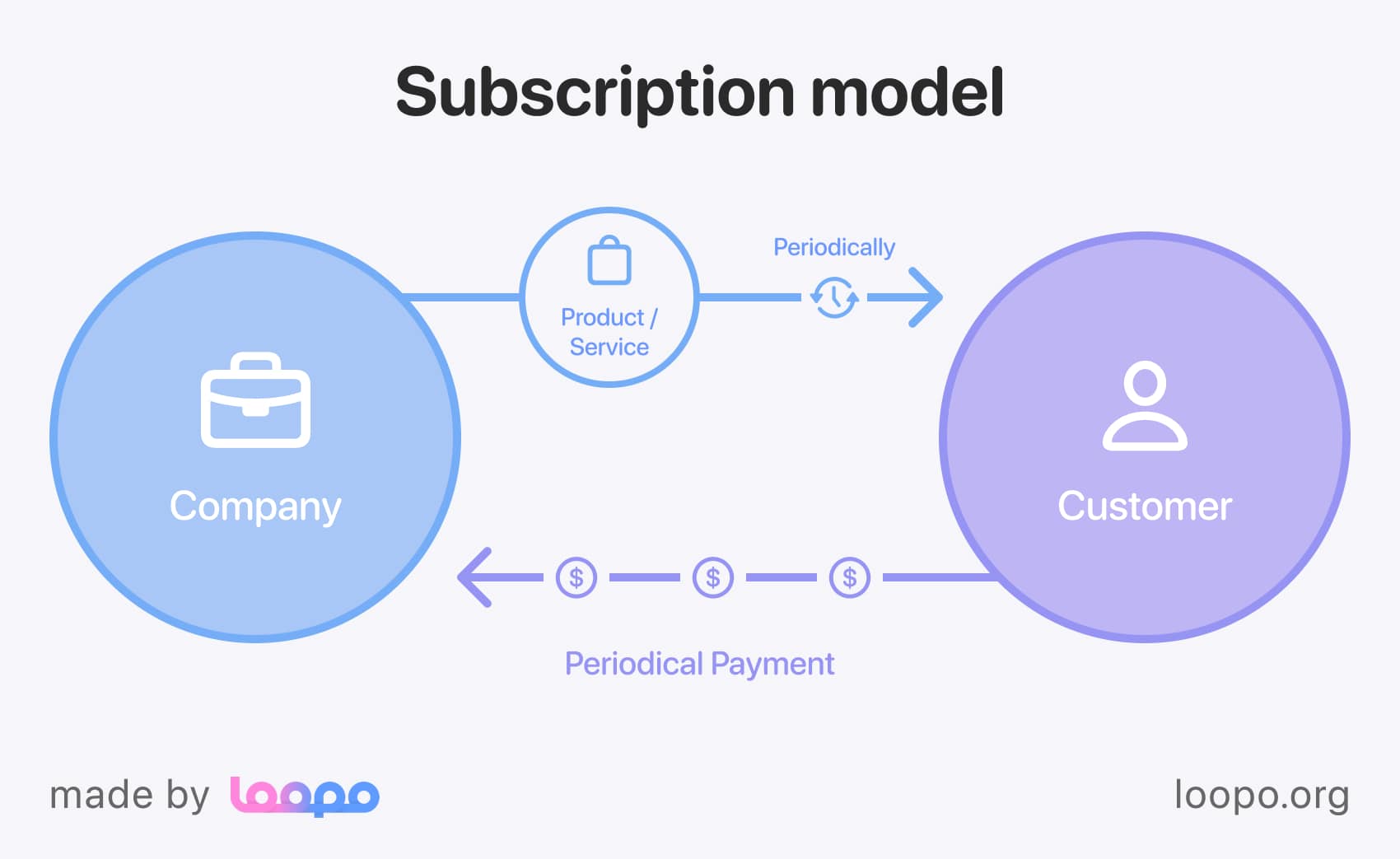
This model is flexible enough, and it is comfortable for content creation, social media management, email marketing, analytics reporting, etc. All because these processes last for some time, and their length cannot be precisely predicted.
Pros and cons
Among the pros, let’s highlight the following:
- Long-term results. When clients sign up for an agency’s services via a subscription, the cooperation lasts at least a month, allowing both parties to aim for long-term results.
- Lasting collaboration and support. With a subscription-based model, clients receive ongoing support and collaboration from the agency. This fosters a long-term partnership, allowing agencies to develop a deep understanding of the client's business and provide consistent and tailored services to meet their evolving needs.
However, there are disadvantages as well:
- Higher management needs. As with any lasting thing, people get used to it. The team might take the job less seriously, while clients might forget to provide continuous feedback. Hence, such an approach needs stronger project management and coordination.
- Complicated pricing. It may be difficult to price certain services the agency offers because of their specifics. Hence, each service provided must have a price and can be difficult to manage.
Value-based (CPA payment model)
The value-based pricing model is often called a CPA payment model. Here, CPA stands for cost-per-action model and is the last one on our list. The value-based model aligns the agency's compensation with the specific results it achieved for the client.
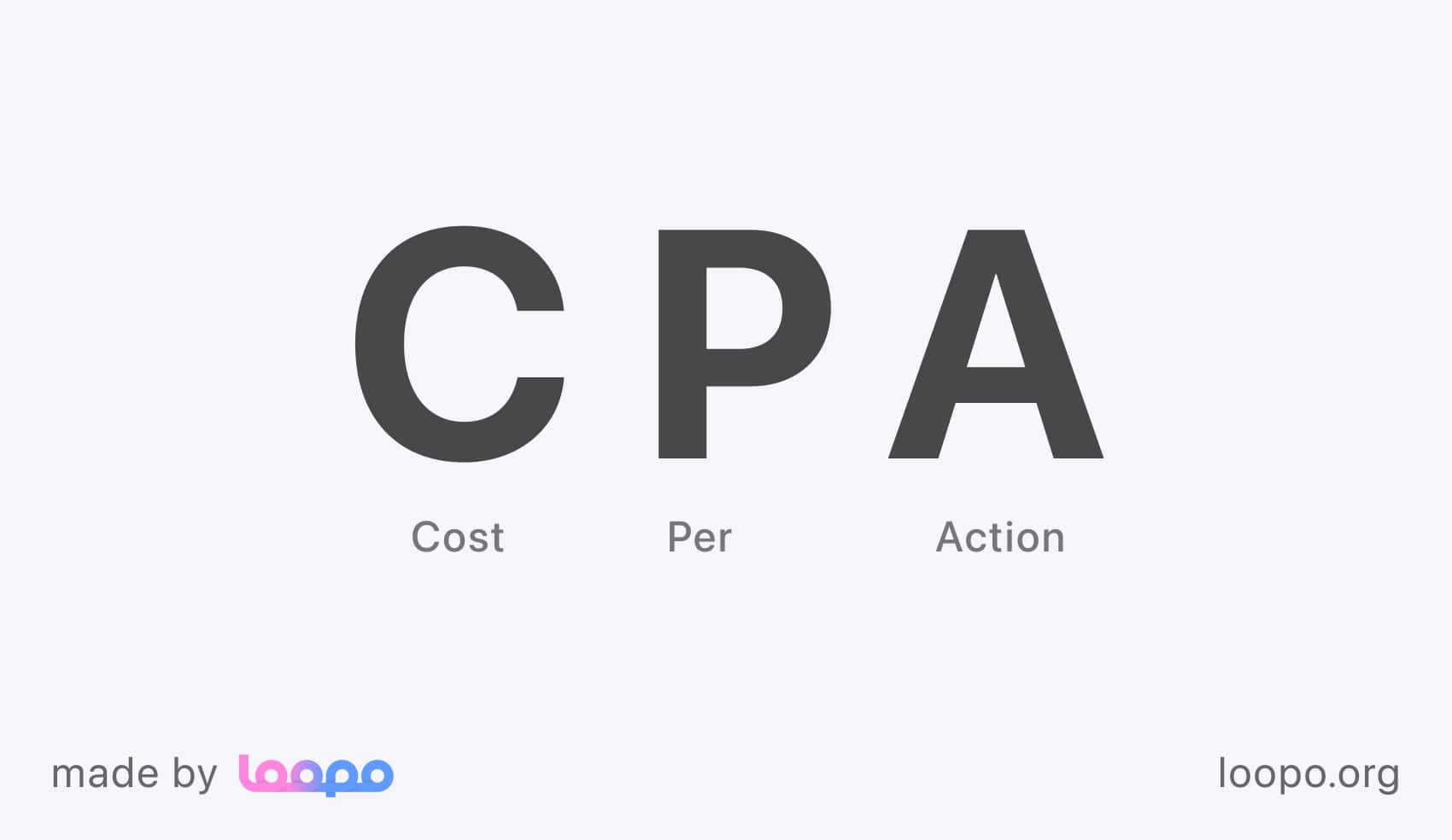
According to this model, there are no fixed prices or hourly rates. Instead, the agency receives payment based on predetermined key performance indicators (KPIs) or desired/ordered actions, such as lead generation, sales, or conversions.
Before the work starts, it is important that both the agency and the client define the desired outcomes and agree on the payment structure based on the value delivered. This model incentivizes the agency to focus on delivering tangible results and aligns the interests of both parties.
Pros and cons
Here are the pros:
- Justified payment. A straight connection between the actually achieved result and the compensation fosters a sense of justice and reliability. This creates a strong incentive for the agency to focus on delivering amazing outcomes because their income is directly tied to the success of the client's campaigns.
- Client-focused approach. As value is the only deliverable, this model encourages agencies to deeply understand the client's goals. This leads to a more client-centric approach, where the agency focuses on delivering results that are in line with the client's specific objectives.
Among the cons, the significant ones are:
- Complexity in measurement. Measuring the value of the agency's work can be tricky, especially for things like brand awareness and customer loyalty, which are not always easy to quantify. It takes careful planning and ongoing tracking to figure out the right metrics and measure the impact accurately.
- Subjectivity factor. One thing to keep in mind is that determining the right value and price can be a bit subjective. It involves discussions between the agency and the client to find a fair balance that works for both sides. Sometimes, it can be a little challenging, but open communication and flexibility can help to solve it.
Partnership
Among other digital marketing business ideas, partnerships are quite popular. By forming strategic partnerships with like-minded organizations, the opportunities to generate revenue and leads are endless. Hence, setting up lasting and solid partnerships is a true win-win decision in creating a digital marketing agency business model.

Partnerships are all about mutual benefits. As you team up with the right people or organizations, both parties can get a lot from these fruitful relationships. Moreover, partnerships are lasting processes. Finding them may take time, but as soon as your agency starts to make waves, connections will start to appear on the horizon.
There are 4 types of partnerships we’ll cover, to be precise. Let’s cover them in greater detail.
With influencers
First of all, who are they? Influencers are people who have lots of subscribers on social media platforms and show their lifestyle, play games, or simply post things. Due to the high activity of their followers, they can also promote brands, products, or services to their audience and earn a lot from it.
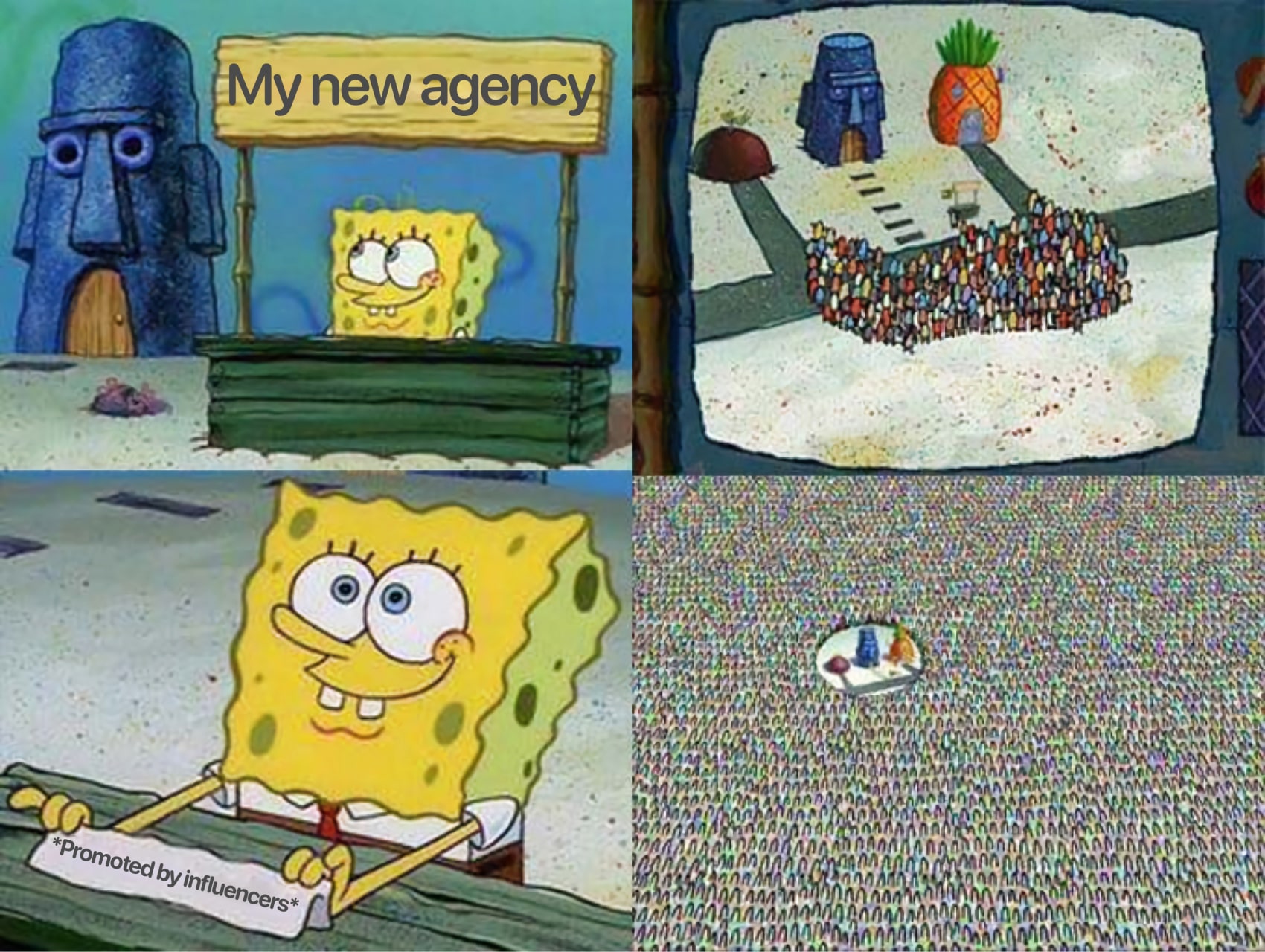
Accordingly, your agency can team up with influencers and it would be a great idea! By having reliable connections with different influencers, you can offer not only your services but also become an intermediary between the client and the influencer. In this strategy, you can steadily earn a commission while also continuing to offer your services.
After all, it's a wonderful and simple way to have additional income, build more connections, and offer even more to your clients. With this partnership type, everyone wins: influencers do what they love and earn, the client’s brand receives the reach it seeks and you earn a stable commission for it.
With clients
Compared to partnering with influencers, clients as partners seem to be more solid-looking, don’t you think? With clients, you can build lasting relationships and there are a few ways to do so.

Firstly, teaming up with previous (or current) clients of yours is a fantastic way to run a lead generation campaign using their testimonials. Moreover, it's proven to be an extremely cost-effective alternative to any other type of partnership. Why?
Most of the time, you get those valuable testimonials for free, and you can also use the visual assets you've created for your client as the content for your ad. However, it has to be thoroughly discussed with the clients themselves to not disrupt your cooperation, hinder their development, or create room for conflict of interest.
Secondly, you can take advantage of word-of-mouth marketing. Basically, it’s a strategy that grows on customers’ reviews and the experiences they share. They can share it with their family, coworkers, friends, etc. Hence, WOM allows you to attract even more leads through positive reviews and ratings.
Lastly, among other techniques, you’ve probably heard about referral programs and bonuses. Your agency can take advantage of it too! For instance, you can apply it in creating partnerships with clients. For example, you can make use of it by providing your clients with bonuses when they bring a friend and introduce them to your services.
With other agencies
Normally, agencies specialize in some areas, and in others, they are weaker. For instance, you run an agency specializing in social media, but the client is also seeking ways to set up an email marketing campaign or do an SEO audit.
That's where the idea of partnering with a complementary agency comes into play, such as a top-notch website branding company. Thanks to the partnership you can establish, you will be able to not only not lose the client but also appear in a good light providing them with everything they need even if it’s out of your work range.
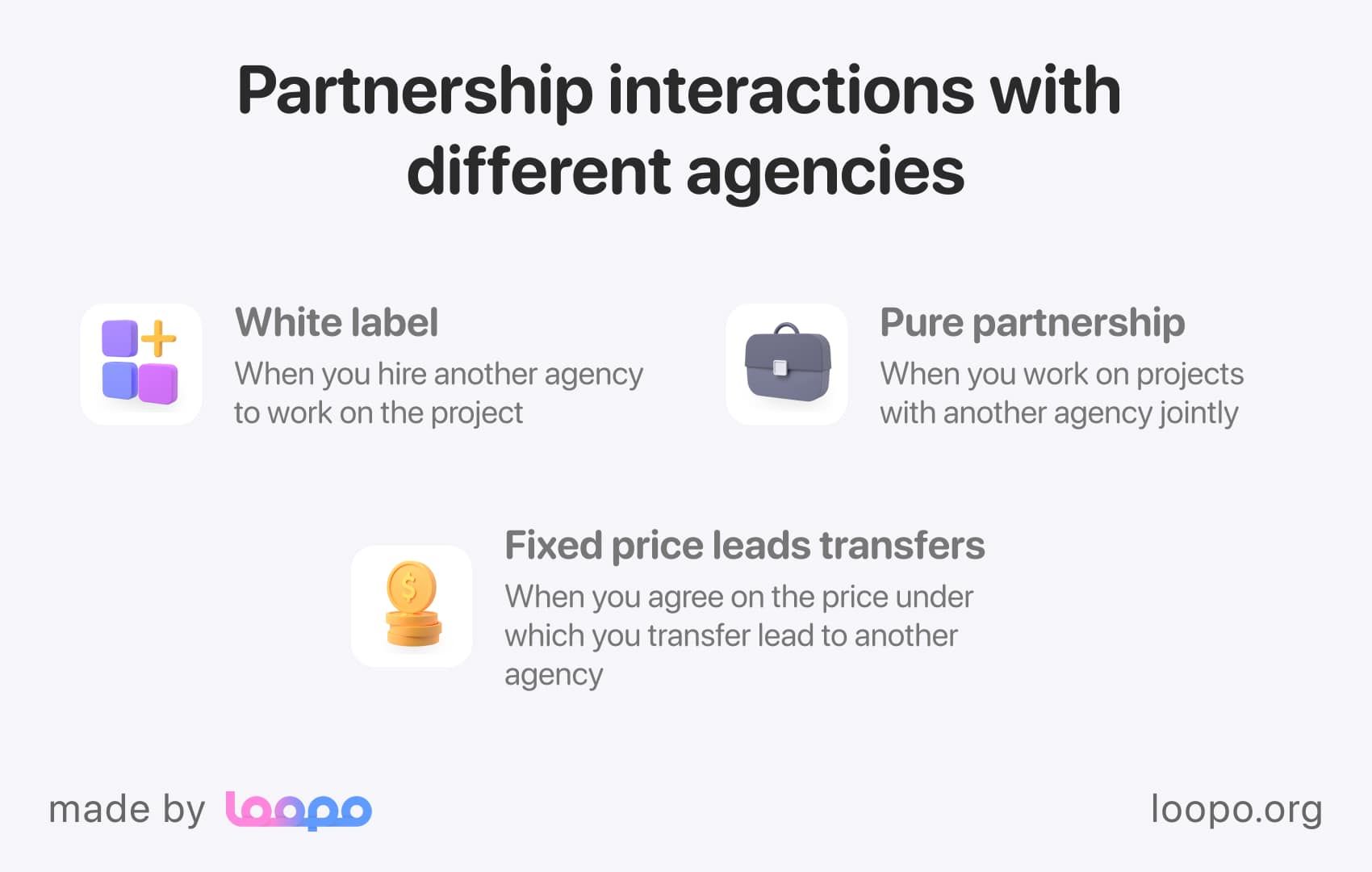
In a nutshell, there’s a myriad of ways both parties can boost their performance. With joint collaboration, you can offer services at special prices, allow clients access to a wider range of specialists and simply combine the expertise of both agencies.
The best part is, by teaming up with complementary agencies, you won't be competing directly with them, and you can tap into their established clientele for mutual growth.
With media
To enter a whole new market, digital marketing agencies can often partner with the media. Forming partnerships with media can be extremely fruitful, and here’s why.
First of all, as mentioned, the agency can enter a whole new market, expanding its reach and exposure. Partnering with media outlets allows the agency to access a wider audience, leading to increased exposure and visibility for its clients.
Secondly, it would be silly to deny the level of trust an agency can gain when partnering with trustworthy and credible media. With clients’ trust in place, your agency can then get access to the world of the most unique opportunities. You can get a word with industry experts, take exclusive interviews, and attend closed events.
Lastly, there’s such partnerships create a lot of room for promotions. For instance, you can try cross-promotions, where you advertise the media, and your agency gets highlighted in their publications.
Paid & Owned Media Channels
Since we talked about the media in the previous paragraph, let's take a closer look at it, especially because it’s yet another important aspect of the business model for digital marketing agency.
In a nutshell, paid and owned media are two different ways agencies utilize to generate income from advertisements. According to this channel’s logic, advertising agencies offer a range of services to help their clients effectively promote their campaigns and take a percentage of the Return on Investment (ROI) generated from the ads as a source of additional revenue. Sounds complicated? You bet. But it is actually not, take a look.
Additionally, agencies can run advertisements for their own company, with all the ad revenue directly benefiting the organization. Let's explore these options in more detail.
Paid media
This type is the primary one all businesses utilize today. It represents advertisements on social media (Instagram, LinkedIn, Facebook, etc.), Google Ads, YouTube ads, and physical paid ads such as getting listed in newspapers, on flyers, etc. Under the paid media model, agencies charge clients based on the ROI achieved through various paid advertising channels. Agencies, in turn, can do wonders and aim them all at expanding clients’ reach and driving traffic.
Imagine an agency running a social media campaign for a client. It incorporates paid ads as part of the content marketing strategy. Then, they simply include the cost of running these ads in the overall price charged to the client.
Alternatively, the agency has the option to receive a percentage of the ROI once the campaign concludes. This way, the agency gets compensated for its efforts, regardless of the specific results achieved. This approach aligns perfectly with a value-based pricing model, making it easier to charge at the end of the campaign.
Owned media
As simple as it seems, owned media refers to all the content created by the agency, such as articles, social media posts, videos, and others. Accordingly, owned media resembles any content your agency entirely owns, freely manages, and publishes.
In terms of revenue, there’s a lot of flexibility. For instance, agencies can charge clients based on the amount of owned media created for a campaign or agree on a percentage of ROI with the client. Utilizing owned media is a powerful way to promote the agency's brand, showcasing its value to potential clients and influencing them to convert.
If there are ever two potential options to choose from, it would be wise to compare. So, to save you some time, let’s outline both paid and owned media in a table and list potential pros and cons you might encounter using them.
| | Paid media | Owned media |
| Purpose | Extend the reach of your brand to increase awareness, engagement, and sales. | Create lasting relationships with new and existing clients. |
| Pros |
|
|
| Cons |
|
|
Projects
In the business model for digital marketing agency, the ‘Projects’ section is usually dedicated to the way how you provide services. Normally, agencies have different approaches, and thus, there’s room for choice. When just starting out, among the myriad of choices, it is always better to stick to two basic ones. Let’s take a look at them.
Long-term contract
When you just started your agency, it would be wise to acquire lasting and complex projects. They can be difficult, but in return, they’ll help you advance in the digital marketing world. In fact, long-term contracts typically last for a few months but can go to years. Over this course, the agency provides ongoing marketing support, updates campaigns, analyzes the data, and improves the results.
Moreover, such projects can bring great advantages.
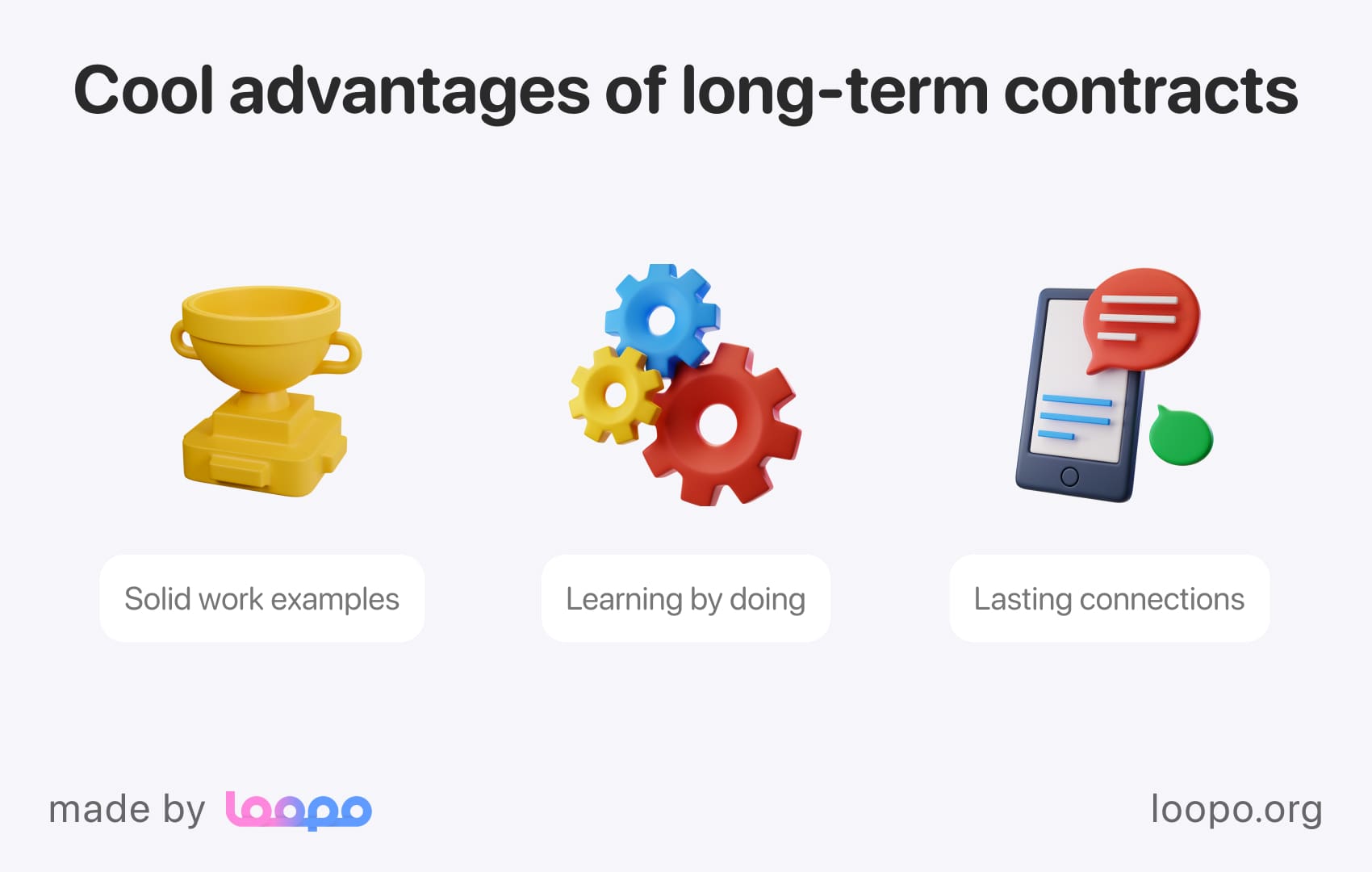
- Solid work examples. When you will have several solid projects in your portfolio, you can showcase your unique approach and the whole range of professional services you provide. Moreover, it would be awesome to have examples of works varying in niches and specialization. This way, potential leads will see your diversified approach and more likely see your agency is suitable for the job!
- Learning by doing. Apart from knowledge, the fresh team needs practice and lots of it. With complex projects, you can analyze how each gear in the mechanism works, where they need more supervision, and which aspects of their work are weaker.
- Lasting connections. When working on a complex project, you get quite close to the client and their team, creating an effective connection and a long-lasting relationship that will definitely be useful in the future.
One-time client
Absolutely opposed to long-term contracts, one-time clients, often called one-offs, pose shorter projects. According to this idea, the client and the agency agree on everything beforehand. They compose a set of services required, the price for them, timeframes, and deadlines.
So what are the advantages?
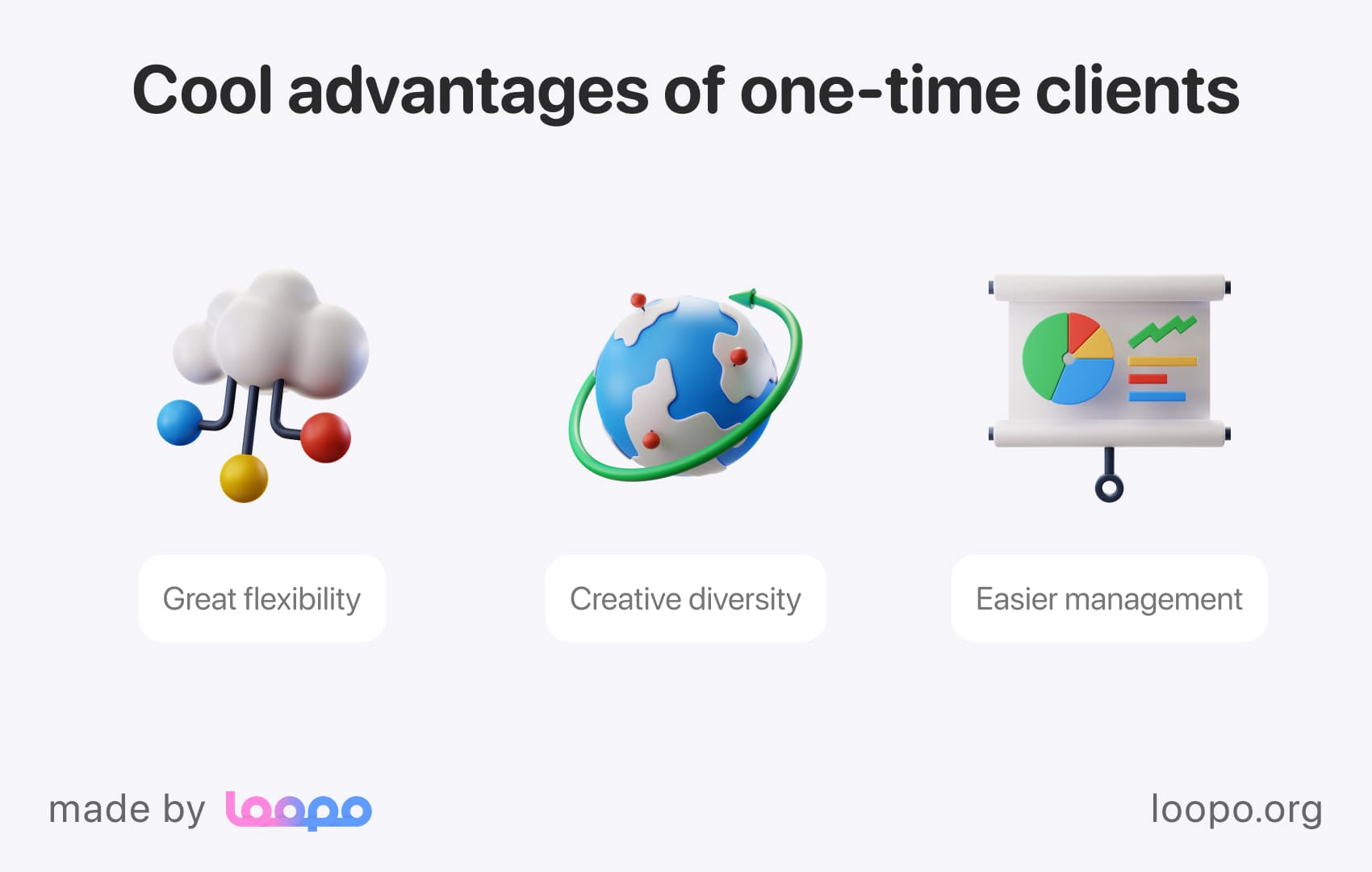
- Great flexibility! With one-time clients, you can experiment with different ways of offering services. As the projects are shorter, with ones, you can try offering different pricing models and experimenting with campaigns, channels, and other variables. Once again, will be able to showcase many different projects in your portfolio and potentially attract more leads!
- Creative diversity. Needless to say that it’s interesting to work on many different projects. People, your team, can simply get bored with long-term work. So, shorter ones will always bring something new, forcing your team to try different approaches and grow professionally grow and expand their expertise.
- Easier management (probably). Instead of managing one huge project, you can assign a project manager to each one-off contract. This way, they will be extremely easy to handle. This way, you will be able to boost the productivity of your team. Moreover, you can adopt different marketing frameworks, dividing your team in numerous ways and boosting the overall performance and KPIs!
Business model canvas for digital agency
And here we are, the finale of the entire business model planning. Digital marketing agency business model canvas, or the BMC, is a strategic management tool that contains everything we discussed above and even more.
Basically, it’s an assembly that describes your entire business, its design, and internal operations. It usually comes in the form of a visual representation of the key components and activities that make up a business, helping to identify its core value proposition, customer segments, revenue streams, cost structure, and other essential elements.
Let’s focus on BMC’s structure. It is usually depicted as a large chart divided into nine key building blocks. Here’s what it looks like.
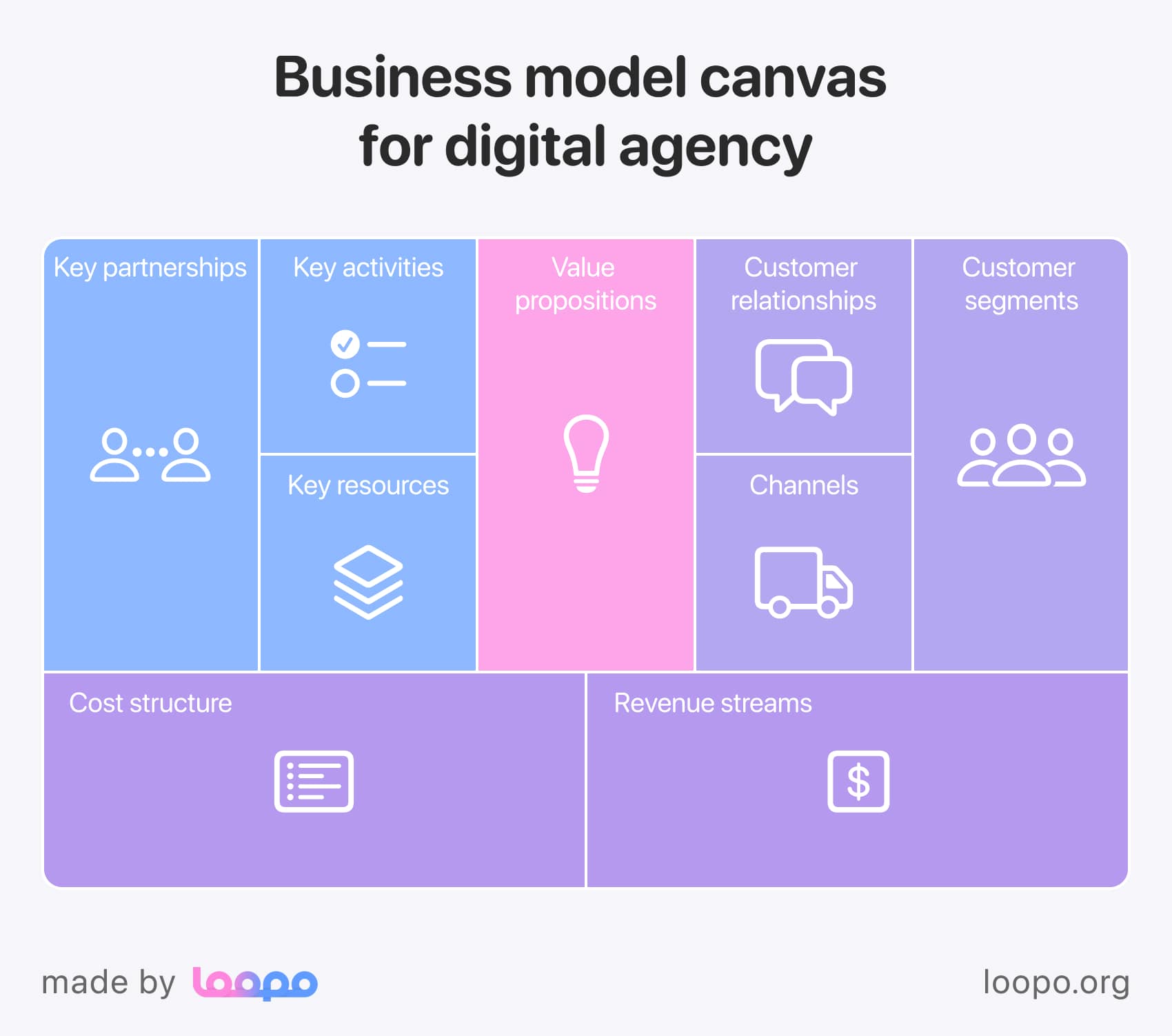
So, all of the 9 blocks have a specific purpose. Let’s decipher them now in table (so it’ll be comfortable to take screenshots).
| Building blocks | Description |
| Customer segments | Define groups of people or organizations that the business is looking to serve. |
| Value propositions | List the benefits and values the agency provides to clients. |
| Channels | Describes ways the agency utilizes to deliver its value proposition to clients. |
| Customer relationships | Lists all interaction types and relationships the agency develops with clientele. |
|
Revenue streams
| Outline all ways in which the agency earns money. |
| Key resources | Describe all essential assets, expertise, and skills required to handle the agency’s operations. |
| Key activities | Highlight major processes that the agency undertakes to deliver its services. |
| Key partnerships | Include information about all organizations your agency collaborates with to enhance its operations. |
| Cost structure | Outlines all possible expenses and prices that the agency needs to run the business. |
So, why do you need it after all?
With a digital marketing agency business model canvas, your marketing agency can have a clearer overview of its business model. With this overview, you can enhance your decision-making and create more space for innovations and growth.
To give you more practical knowledge, let’s imagine a middle-size digital marketing agency and compose an approximate BMC for it.
| Building blocks | Description |
| Customer segments |
|
| Value propositions |
|
| Channels |
|
| Customer relationships |
|
|
Revenue streams
|
|
| Key resources |
|
| Key activities |
|
| Key partnerships |
|
| Cost structure |
|
In a nutshell, this BMC example can be rusty and inexact, but still, it can serve as a sample of how you will need to do it. After all, it’s a too powerful tool to neglect it. So, make use of it, folks!
Conclusion
So, if you ever start wondering how to grow a digital marketing agency, the business model will always be the secret recipe for marketing success. It's not just a boring chart but a super-cool and adaptable tool that helps agencies like yours conquer the marketing realm.
There are dozens of variables in the entire digital marketing agency’s business model formula. Hence, it will always be a great idea to give them a try, experiment, and find what suits your agency the most.
To dive even deeper, always learn and listen. Do not avoid promising partnerships and upcoming networking events, as you never know where you will find a new cool client, colleague, or partner!
When you create a business model for a digital marketing agency, Loopo can be of utmost help. It allows you to manage resources smartly, edit publications right in the app, and manage all possible files.
After all, this piece provides a lot of things you ought to know about digital marketing agencies’ business models. Along with all this knowledge and Loopo’s support, feel free to sign up in no time, embrace creativity and stay sharp in this ever-changing marketing landscape.
